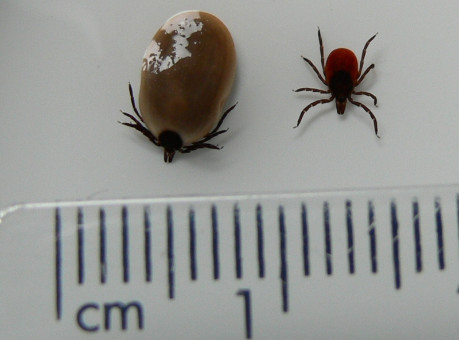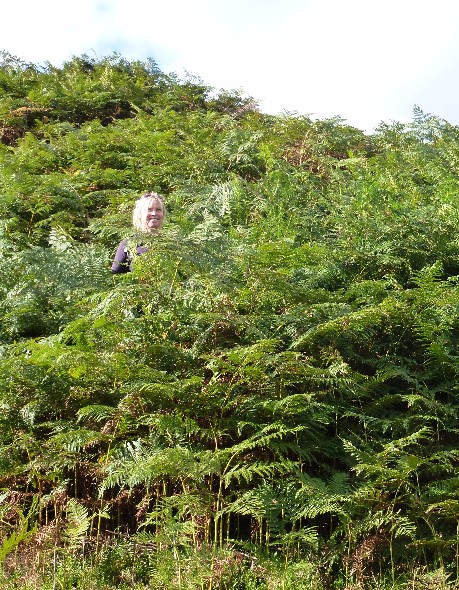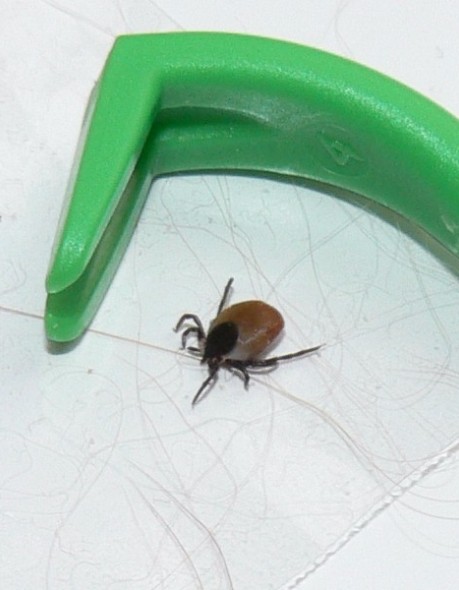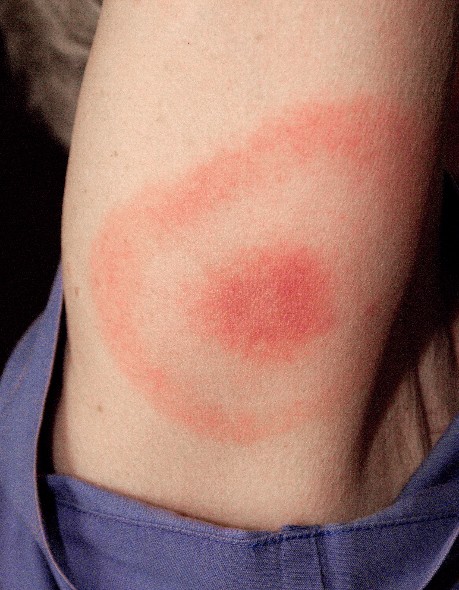The tick is an invertebrate related to spiders. There are over twenty species in Britain related to various different mammal or bird hosts. They carry a number of diseases, the most well known of which is Lyme disease.
They can be found all across Scotland and particularly in woodlands, moorlands and long grass especially where deer or sheep are present.
They are particularly active in the summer, but can be found at any time of year.

Two ticks of same type: the one on on the left is engorged after feeding, while the one on the right has not fed

Lush growth on the hill - ideal tick terrain
Firstly, don’t panic if you find an embedded tick – it's most likely that it's not infected, and if you remove it within 24 hours it is unlikely to have passed on any disease causing bacteria.

A tick hook
Lyme disease is a bacterial infection that can be spread to humans by infected ticks. It's usually easier to treat if it's diagnosed early. Full recovery is possible, but treatment in the later stages of infection is more difficult and relapses are common.
Research indicates that the variant found in Scotland is different to that found elsewhere in the UK. The Scottish variant seems to cause more neurological problems with symptoms ranging from stiff neck, severe headache, meningitis, temporary paralysis of the facial muscles (Bell’s Palsy), numbness and poor motor coordination.
Lyme disease is notoriously difficult to diagnose as it can demonstrate different symptoms in different people and some of the symptoms are similar to other infections and illnesses.
If you experience any of these symptoms, see your GP immediately and mention your concerns about Lyme disease.

The 'bullseye' rash that can signify Lyme Disease
You can also find out more about ticks and Lyme disease at the following links: